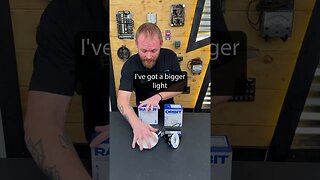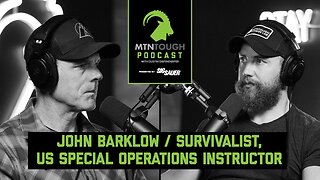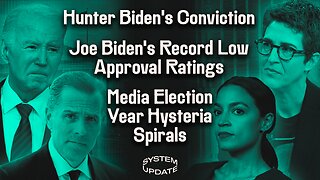BEST OF CODE TIME 3: Feeder & Service Entrance Conductor, Mechanical Execution of Work & Panelboards
There are a lot of sometimes confusing terms that we must learn as electricians. Especially considering that there are many different terms used to describe the same thing! In the latest episode of Electrician U, Dustin explains Feeder & Service Entrance Conductors, Mechanical Execution of Work, and Panelboards.
🤘⚡️MEMBERSHIP⚡️🤘
JOIN ELECTRICIAN U - become a member and get:
FREE Continuing Education every year
FREE Practice Exams
FREE Monthly Video Courses
FREE Weekly Live Instructor-Led Classes
FREE Monthly Educational Newsletter
Premium Members-Only Content
Private Discord Channel
Monthly Members-Only Discord Chats
Sign up here --- https://www.electricianu.com/electrician-u-membership/
🎧🎹MUSIC AND VIDEO:🎹🎧
https://www.facebook.com/descantmv
🎬✍️ART AND ILLUSTRATION:✍️🎬
https://www.daverussoart.com
Article 100 of the NEC defines Feeders as “all circuit conductors between the service equipment, the source of a separately derived system, or other power supply source and the final branch circuit overcurrent device”. In essence, a set of wires leaving the service and “feeding” another panel or distribution point. There are two definitions for Service Entrance Conductors in the NEC (one for overhead and one for underground). An overhead service entrance conductor is defined as “The service conductors between the terminals of the service equipment and a point usually outside the building, clear of building walls, where joined by tap or splice to the service drop or overhead service conductors”. An underground service entrance conductor is defined as “The service conductors between the terminals of the service equipment and the point of connection to the service lateral or underground service conductors”. So, the term feeder really describes a set of conductors AFTER the service feeding something while service entrance conductors describe the conductors BRINGING IN the service to our building.
When it comes to HOW we install our electrical work, we must install it correctly and properly not just a rag tag installation! Article 110.12 of the NEC tells us “Electrical equipment shall be installed in a neat and workmanlike manner”. That in itself tells us that we must install our work in a neat systematic order. The code goes on to tell us that we must close up any unused openings (we don’t want someone sticking something into a panel that would cause an arc flash), that the parts of the equipment cannot be damaged or contaminated with anything they aren’t supposed to have on them and that cables & conductors installed exposed on a surface of ceilings and walls shall be supported in a fashion that will not damage the cables.
Article 408, Part 3, governs the installation of Panelboards. Article 408.30 specifically tells us that the panelboard shall be protected by an overcurrent protective device that does not have a rating greater than the panel itself. So, you cannot protect a 225a panel with a 400a breaker! The panel could fail before the breaker trips. The NEC also states that the overcurrent protective device shall be located within or at any point on the supply side of the panelboard. That is why some of the panels we encounter are Main Lug Only and some are Main Circuit Breaker. As long as the panel is being protected by an overcurrent device on the Line Side of the panel, then the breaker doesn’t necessarily need to be IN the panel. However, Article 225 Part 2 (buildings or other structures supplied by a feeder or branch circuit) has some additional items to consider. 225.31 says that a building or structure have a disconnecting means for it. So, if you have a separate building it needs to have a means of disconnect for that building. That COULD be a panel or a disconnect. Many times, it is easier to place a panel on the exterior of the separate building and therefore provides a means of disconnecting power to that building.
We hope this has been helpful in understanding some of the terms and codes in the NEC. Is there a topic you would like to see discussed? Leave a comment in the comment section and let us know! Please continue to follow Dustin and Electrician U as we are constantly adding new content to help our followers be the best they can be!
-
 0:50
0:50
Electrician U
6 months agoWhat Are Lumens?
11.8K4 -
 4:47:54
4:47:54
SNEAKO
16 hours agoSNEAKO X BELAL MUHAMMAD X LAUREN CHEN
99.5K41 -
 14:48
14:48
Adam Does Movies
12 hours agoIs Star Wars DEAD To You? - Rant!
50.6K49 -
 1:05:07
1:05:07
Man in America
15 hours agoTHIS One Secret Threatens the ENTIRE Medical Industrial Complex
67.4K38 -
 1:01:56
1:01:56
TheMonicaCrowleyPodcast
13 hours agoThe Monica Crowley Podcast: People’s Revolt
40.2K9 -
 1:47:26
1:47:26
MTNTOUGH Fitness Lab
19 hours agoJOHN BARKLOW | Knowledge from Storms: Special Operations Instructor & Product Manager at Sitka Gear
36.4K2 -
 1:17:22
1:17:22
Kim Iversen
11 hours agoTit For Tat: Hunter's Political Token Conviction | Israel “It Depends On The Interpretation" Re: Ceasefire Deal
53.5K95 -
 2:01:04
2:01:04
Laura Loomer
12 hours agoEP52: THE GREAT REPLACEMENT: Trump and Biden Spar Over Border Policies Ahead of First Presidential Debate
47.7K21 -
 1:29:32
1:29:32
Glenn Greenwald
13 hours agoHunter Biden's Conviction Proves Media’s 2020 "Disinfo" Campaign; Joe Biden's Approval Ratings at Record Low After Trump Verdict; Liberals Embrace Prison Fantasies to Warn of Trump’s Dangers | SYSTEM UPDATE #281
83.8K116 -
 58:47
58:47
Edge of Wonder
12 hours agoThe Art of Counterfeiting Currency: CIA, China & Iran Sponsored Fake Money?
43.3K13